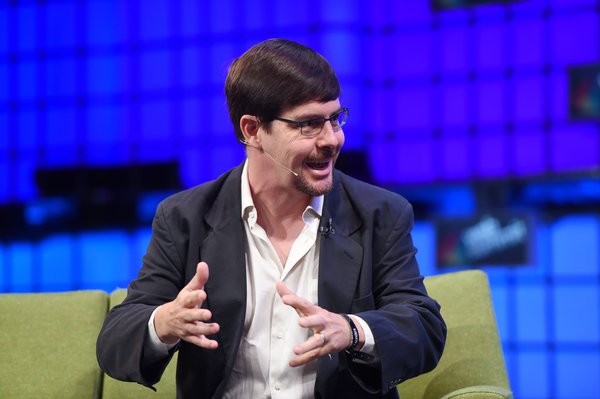A Bitcoin Believer’s Crisis of Faith
By NATHANIEL POPPER for The New York Times
Two years ago, Mr. Hearn quit a cushy programming job at Google’s Swiss headquarters to devote himself full time to what was his great passion: the virtual currency Bitcoin. He was one of a handful of developers around the world dedicated to maintaining the basic software that governs both the creation of new Bitcoins and the network on which the financial transactions take place.
But a nasty fight has torn apart the small brotherhood of Bitcoin developers and raised questions about the survival of the virtual currency. Mr. Hearn, until recently one of the most prominent leaders of the Bitcoin project, became so disillusioned that in December he sold the few hundred Bitcoins he had left and quietly took a job at a new start-up.
The impassioned blog post he was working on last week was an announcement that he was leaving Bitcoin behind entirely: “Bitcoin has gone from being a transparent and open community to one that is dominated by rampant censorship and attacks on bitcoiners by other bitcoiners.”
The dispute — which grew out of a question about the number of transactions the Bitcoin network can handle — may sound like something of interest only to the most die-hard techies. But it has exposed fundamental differences about the basic aims of the Bitcoin project, and how online communities should be governed. The two camps have broadly painted each other as, on one side, populists who are focused on expanding Bitcoin’s commercial potential and, on the other side, elitists who are more concerned with protecting its status as a radical challenger to existing currencies.
The divide has led over the last six months to death threats against Bitcoin developers and hacking attacks that have taken down Internet providers. The sense of betrayal is strong on both sides. One of Mr. Hearn’s primary antagonists, a bearded California-based programmer named Gregory Maxwell, also appears to have pulled back from his work on Bitcoin after receiving anonymous death threats.
These internal struggles have surfaced at the same time that the Bitcoin technology is gaining credibility on Wall Street and in Silicon Valley. Throughout the various controversies that have plagued the virtual currency — including many instances of theft and fraud — the basic software has continued working as expected. That consistency has pushed the value of all outstanding Bitcoins above $6 billion and led many venture capitalists to imagine the technology as the future of finance, a cheaper and faster way to carry out financial transactions of all sorts.
Gavin Andresen is one of the longest-standing contributors to the Bitcoin software. Credit Stephen McCarthy/Sportsfile for Web Summit
Part of the basic appeal of Bitcoin has been its promise to provide a more reliable and trustworthy alternative to existing currencies and financial networks. Unlike the Federal Reserve and Wall Street, institutions that are managed by humans, Bitcoin was supposed to rest on the infallible logic of math and computer code. In this system, programmers like Mr. Hearn, who often volunteered their expertise and effort, were viewed as neutral technicians.
The current dispute, though, is a reminder that the Bitcoin software — like all computer code — is an evolving product of the human mind, and its deployment is vulnerable to human frailties and divergent ideals.
There may yet be a middle ground on the question that began the fight, but for the moment the sides are deadlocked, and that has left the Bitcoin software — and the virtual currency itself — in a state of limbo. Mr. Hearn is convinced that the stalemate will soon make it hard to complete even simple transactions and will eventually drive away users and lead to a price collapse. Mr. Hearn’s concerns about this impasse have been echoed, often in less strident tones, by a growing number of other developers, as well as by start-ups that buy, sell and hold Bitcoins.
Gavin Andresen, a close collaborator of Mr. Hearn’s and one of the longest-standing contributors to the Bitcoin software, said the dispute was likely to cause disruptions in the short term, but he disagrees with the notion that it will damage Bitcoin’s long-term prospects. Other Bitcoin leaders have expressed a similar sentiment, and investors have been inclined to believe them: The price of a Bitcoin has actually risen in recent months, to about $430 this week.
Some of Mr. Hearn’s allies in the battle are hoping the deadlock can be broken if the largest Bitcoin companies get behind something like Bitcoin Classic, a new version of the basic Bitcoin software that was announced this week, and that aims to expand the network’s capacity while also introducing new standards of governance.
But Mr. Hearn is convinced it is already too late. During nighttime walks in the woods near his apartment in Zurich, he has been trying to figure out where Bitcoin went wrong and what it means for the idealistic beliefs that led him to the project in the first place.
“It never occurred to me that the thing could just fall apart because of people getting crazy and having fundamental political disagreements over the goals of the project,” Mr. Hearn said in a Skype interview from his apartment. “It’s really shaken my faith in humanity.”
An Early Advocate
Mr. Hearn, 31, grew up in Manchester, England, where he played music and went rock climbing in his free time. He was one of the first serious programmers to take an interest in Bitcoin, back in April 2009, just a few months after its mysterious founder, known as Satoshi Nakamoto, let it loose in the world.
At the time, Mr. Hearn was working on mapping software at Google, a job he’d had since graduating from Durham University, in England. He had no professional involvement with finance or currencies, but the financial crisis convinced him that national currencies were vulnerable to politics and bad decision-making. When a web search led him to the primitive website for Bitcoin, he immediately emailed Satoshi, as the founder had become known.
“So many questions,” Mr. Hearn wrote. “But it’s rare that I encounter truly revolutionary ideas.”
Like many of the programmers who took an early interest, Mr. Hearn admired the rule-bound nature of the system. Only 21 million Bitcoins would ever be created. And the distribution of new Bitcoins was clearly laid out, relying on mathematical algorithms that left no room for human meddling.
Satoshi had written the software containing these rules, but after it was released, anyone could see the code and make changes. The people downloading this open-source software essentially voted on which changes to accept based on which version of the software they chose to use. If Satoshi proposed changes that they didn’t like, they didn’t have to download and run it, and anyone could offer an alternative. Bitcoin, like many other open-source projects, was a sort of leaderless democracy — a new way of governing human behavior online. One computer, one vote, with anyone able to propose new laws.
It took a while for Bitcoin to catch on, but by late 2010, when Mr. Hearn started contributing to the code, the currency had begun developing a passionate following. The apparently leaderless structure and seamless functioning of the software won Bitcoin renown among libertarians and anarchists, and soon enough, among entrepreneurs and venture capitalists, drawn to the transparent, mathematical foundations of the project.
Mr. Hearn joined a small but growing group of volunteers who worked on the basic Bitcoin software from various corners of the globe — the most committed of whom became known as the core developers. They met in person only a handful of times, but they would chat constantly online and send emails discussing potential changes. The leader of this effort, after Satoshi bowed out in 2011 (without ever revealing a real identity), was Mr. Andresen, a genial father of two from central Massachusetts who kept everyone on the same page.
Mr. Hearn was always a bit different from the rest of the core developers. Whereas most of them were classic techies, with patchy facial hair and ill-fitting clothes, the clean-cut Mr. Hearn had a taste for fashionable jeans and skateboard shoes — as well as an easy sociability. Within Google, Mr. Hearn became an informal spokesman for Bitcoin, answering queries from the Google co-founder Sergey Brin and leading an in-house email list discussion group that had attracted 400 employees by the time Mr. Hearn left.
Mr. Hearn was also, along with Mr. Andresen, of a practical mind-set, most interested in improving the basic experience of holding and using Bitcoins. He was not given to making the big pronouncements common to the more ideological members of the community, about the currency displacing the dollar or euro. He was more focused on the immediate challenges that could trip it up.
When tension cropped up among the developers, Mr. Andresen kept the peace by brokering compromises.
Things Turn Sour
The bonhomie began to fall apart last year because of what appeared to be a positive development: the continuing growth in the number of Bitcoin users and transactions.
The problem was that, early on, Satoshi established a limit on the number of transactions that could be processed by the network every 10 minutes. The cap was meant to ensure that the computers supporting the network, and processing the transactions, would not be overwhelmed by an enormous quantity of data. But Satoshi had suggested that the limit should be temporary, and as the number of transactions coursing through the network inched closer to the cap, delays started to occur and transactions were not going through.
When Mr. Hearn began pushing for changes to the core Bitcoin software to allow for larger blocks of transaction data, he faced immediate resistance. Gregory Maxwell, a largely self-taught programmer who had worked on Wikipedia and the Mozilla web browser, both open-source projects, said that larger blocks of transaction data would be harder for ordinary computers to process. The result, Mr. Maxwell warned, would be to hand control over the network to big companies that could afford powerful computers.
For Mr. Maxwell, slower transactions seemed to be a secondary issue to protecting Bitcoin from centralized sources of authority.
“It’s far from clear to me that the world will get a second shot at this in the next several decades if Bitcoin lapses into the same-old, same-old,” he wrote to other developers.
Mr. Hearn retorted that the technical issue wasn’t such a big deal; ordinary computers could mostly process the larger blocks of transaction data. More important, he argued, was that Bitcoin needed to succeed first as a cheaper, faster payment network, like PayPal or Visa. If Bitcoin wanted to ever compete with mainstream payment systems, which could process tens of thousands of transactions a second, it would have to do away with Bitcoin’s existing limit of fewer than seven transactions a second.
The debate was complicated by the financial interests of the people involved. Mr. Maxwell and several of his supporters were then working for a Bitcoin start-up called Blockstream, with $21 million in funding from venture capitalists. Mr. Maxwell’s start-up was trying to make it possible to break off some transactions from the Bitcoin network, making the number of transactions the network could handle less important.
After leaving Google, Mr. Hearn had begun taking a salary for his Bitcoin work from the venture capital firm Andreessen Horowitz, one of the most prominent supporters of Bitcoin start-ups in Silicon Valley.
As the debate grew increasingly fractious, friendships among the core developers fell apart.
In the past, the leader of the Bitcoin software project, Mr. Andresen (no relation to Marc Andreessen of Andreessen Horowitz), would have stepped in to mediate. Mr. Andresen says that as “lead maintainer” he always sought consensus, but on the few occasions when there was irresolvable disagreement, he made the final call, acting as a sort of “benevolent dictator.” But Mr. Andresen stepped back from his day-to-day role in 2014 and gave the job of lead maintainer to another volunteer on the project, Wladimir J. van der Laan, a Dutch programmer, who said he did not intend to follow Mr. Andresen’s lead.
“I cannot be the decider for network-level issues,” Mr. van der Laan said via email this week. “No one ‘owns’ Bitcoin. No one can decide over Bitcoin as if it’s some kind of company.”
Mr. Hearn and Mr. Andresen ultimately decided late in the summer that the only way forward was to give the vote to the people actually using the Bitcoin software. They put together their own version of the core software — largely the same as the current software, but with an allowance for more transactions — which they called Bitcoin XT. If a clear majority of the system’s users downloaded the software, it would become the new law of the land — what is known in open-source terminology as a fork.
Forks are part of the open-source process and had been used to make small, agreed-upon fixes to Bitcoin. But no one had tried the sort of divisive fork that Mr. Hearn and Mr. Andresen devised, largely because of the risk that it could result in two incompatible Bitcoin networks and create questions about the legitimacy and value of existing Bitcoins.
“So this is it. Here we are. The community is divided, and Bitcoin is forking,” Mr. Hearn wrote on Aug. 15, announcing the new software.
The release of Bitcoin XT was viewed by Mr. van der Laan and Mr. Maxwell as an act of betrayal. Yes, it was democratic, but they said that decisions about the core software should be made by technical experts — not by populist campaigns.
In an interview with Vice a few days after the announcement, Mr. Maxwell compared the Bitcoin XT team to a “guy standing on the sidelines with a beer cup hat.” One of Mr. Maxwell’s confidants likened it to an attempted coup. Their supporters blocked Mr. Hearn’s announcement of Bitcoin XT — and any discussion of it — from the Bitcoin.org website and several other online forums where Bitcoin members met to discuss the project.
The fight took on a new dimension when a powerful hacker distributed Bitkiller, malicious software that sought out computers that downloaded the Bitcoin XT software and overwhelmed them with traffic. One Internet provider on Long Island said the Bitkiller attacks brought down service for part of southern Long Island for several hours. The biggest American Bitcoin company, Coinbase, was taken entirely off-line for brief periods after declaring support for XT. Not surprisingly, this scared away many Bitcoin users from downloading the new software or even declaring support for it.
The hacker responsible for the attack, who appeared to be based in Russia, told Mr. Hearn in an online exchange that someone “payed me for killing XT” — though he declined to say who was responsible.
In the late fall, Mr. Maxwell and his supporters tried to engineer a compromise. They organized meetings in Montreal and Hong Kong where the leading developers met to discuss alternative ways to scale the Bitcoin system. Mr. Andresen went to the first of these, where Mr. Maxwell’s allies announced their own, more gradual plan for increasing the network’s capacity. But Mr. Andresen and Mr. Hearn both felt that the recommendations didn’t go far enough. Mr. Andresen, who is not normally given to sniping, began to harden his position.
“It’s likely that the current developers will get fired, and some other team will replace them because they are not listening to their customers,” he said in an interview last week.
Mr. Maxwell was equally dismissive of Mr. Hearn’s camp — saying that they had politicized what should have been a technical decision. Then he suddenly dropped out of the conversation in mid-December. He has not explained his absence, but colleagues say he was tired of the rancor.
An Uncertain Future
Mr. Andresen said a number of large Bitcoin companies had been asking him to come back in and lead a new version of the Bitcoin software. But if he did return to his old role, he said, he would insist on clear rules about decision-making.
Mr. Hearn says he thinks that getting the opposing camps together will now be very difficult. He believes that the dangers of the current impasse have not been reflected in the price of Bitcoin because the full debate has been censored in many of the online forums where Bitcoin is discussed.
Despite the discord, Mr. Hearn has not lost faith in all of the ideas behind Bitcoin. The start-up in New York where he has taken a job, R3, is developing Bitcoin-like networks for banks to enable cheaper and faster ways to trade assets of all sorts. The start-up aims to take advantage of the less-centralized record-keeping methods of Bitcoin, but still allow for someone to be in charge, to handle the software and to manage access to the system.
This work lacks the purity of Bitcoin, but after months of sleepless nights, fretting about betrayed promises, he said, “I want to be in a professional environment again where people are grounded in some sort of business reality.”
The article first appeared in The New York Times







